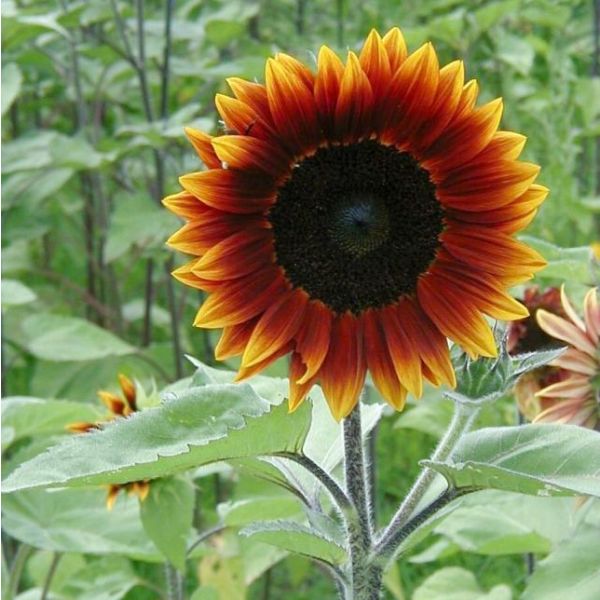Graines Helianthus Earthwalker (Graines Fleur Tournesol, Grand Soleil)
Graines Helianthus Earthwalker (Graines Fleur Tournesol, Grand Soleil)
Ils sont non seulement beaux mais les fleurs sont également comestibles !

Delivery
All orders shipped with UPS Express.
Always free shipping for orders over US $250.
All orders are shipped with a UPS tracking number.
Returns
Items returned within 14 days of their original shipment date in same as new condition will be eligible for a full refund or store credit.
Refunds will be charged back to the original form of payment used for purchase.
Customer is responsible for shipping charges when making returns and shipping/handling fees of original purchase is non-refundable.
All sale items are final purchases.
Help
Give us a shout if you have any other questions and/or concerns.
Email: [email protected]
Phone: +1 (23) 456 789
Availability: En stock
SKU
Helianthus Earthwalker
Le Helianthus Eartwalker est un plant de bonne qualité qui produit plusieurs têtes, et est idéal pour le bord du fond d’un jardin. Cet annuaire robuste, fleurissant la même année, créera un mélange des tournesols charmants. Cette espèce atteindra jusqu'à 1.8-2.7 m (6-9 pi) de hauteur. Ces tournesols attirent les papillons, et sont sensationnels en tant que fleurs coupées. Ils sont non seulement beaux mais les fleurs sont également comestibles !
Un mélange fantastique de couleur éclatantes et bicolores, dans un choix de tonalités de terre avec les grands disques foncés qui sont entourés par des pétales dans une gamme d'orange, d’or, de cuivre, de rouge, d’acajou, de brun, et de terra-cota également comprenant les nuances brun chocolat plus profondes exquises. La tige vigoureuse de cette variété embranchante, avec de multiples pousses sur les cotés, garantit un affichage vibrant de couleurs d'été. Les grandes fleurs sont de 8-10 po. de diamètre. Les graines comestibles moissonnées des plantes matures sont comestibles et peuvent aussi être employées comme décoration ou pour alimenter les oiseaux. Le Helianthus Earthwalker fleurit du milieu de l’été à l'automne.
Zones de rusticités :
3-9 (- 37c/-35f, -5c/25f). L'Earthwalker préfère une position ensoleillée et un sol bien draine. Maintenez les plants moites jusqu'à ce qu’ils soient bien établis. Quelques plants peuvent nécessiter un soutien s’ils sont placés dans un endroit exposé.
| Nom commun | Sunflower |
|---|---|
| Espèce | Helianthus annuus |
| Cultivar | Earthwalker |
| Germination | Sow the seeds thinly, at about 12mm « in. deep, 30 cm apart in well cultivated soil raked to a fine tithe. Germination usually takes around 21 days. Once the seedlings are large enough to handle thin the plants to 30cm (12 in) apart. Alternatively, you can sow indoors in late winter/early spring for earlier flowering. Sow the seeds individually, into 7.5 cm (3 in) pots at a temperature around 20-30C (68-86F). Once they are well grown, gradually acclimatize them to outdoor conditions, before planting out, after all risk of frost. Notes: What is usually called the flower is actually a head (formally composite flower) of numerous flowers (florets) crowded together. The outer flowers are the ray florets and can be yellow, maroon, orange, or other colors, and are sterile. The florets inside the circular head are called disc florets. The disc florets mature into what are traditionally called "sunflower seeds", but are actually the fruit (an achene) of the plant. The true seeds are encased in an inedible husk. Sunflowers in the bud stage exhibit heliotropism. At sunrise, the faces of most sunflowers are turned towards the east. Over the course of the day, they move to track the sun from east to west, while at night they return to an eastward orientation. This motion is performed by motor cells in the pulvinus, a flexible segment of the stem just below the bud. As the bud stage ends, the stem stiffens and the blooming stage is reached. Now the stem is frozen, typically in an eastward orientation. The stem and leaves lose their green color. The wild sunflower typically does not turn toward the sun; its flowering heads may face many directions when mature. However, the leaves typically exhibit some heliotropism. |
| Price View | Tranche de prix |

